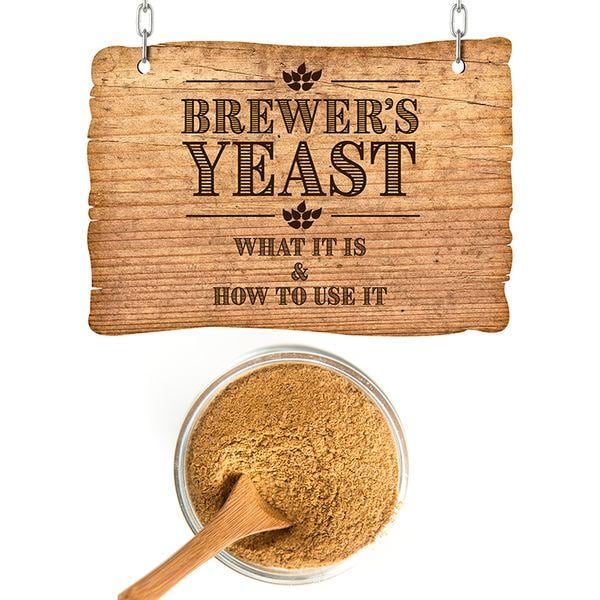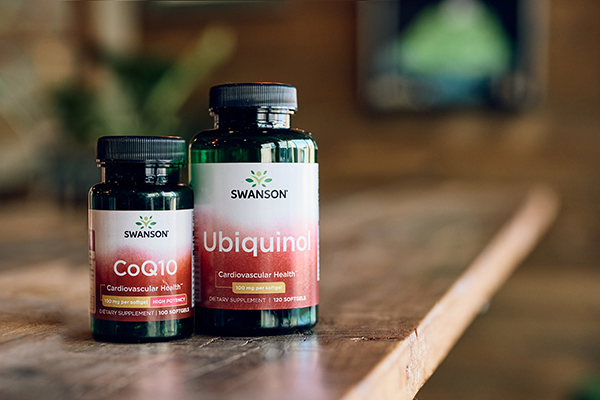As the name suggests, brewer’s yeast is best known for beer brewing, but there’s a lot more to be said about it. It comes from a single-cell fungus known as Saccharomyces cervisiae. It is a favorite among vegetarians and vegans due to its B vitamin and protein content, and it comes with a ton of health benefits.
Brewer’s yeast features chromium as well as other essential vitamins and minerals, some of which contain high levels that help boost your recommended daily intake. These nutrients include the vitamins riboflavin (90%), thiamin (80%), niacin (50%), vitamin B-6 (40%) and folate (15%) and the minerals selenium (90%), copper (50%), potassium (18%), zinc (10%) and magnesium (8%).
Brewer’s yeast also delivers a whopping 16 grams of protein and 6 grams of fiber per two-tablespoon serving. That equals about one-third of your daily protein intake and one-fourth of your daily fiber intake.

Brewer's Yeast Nutritional Profile: (Source)
- Protein: 16 grams, 32%
- Fiber: 6 grams, 24%
Vitamins
- Riboflavin – 1.5 mg, 90%
- Thiamin – 1.2 mg, 80%
- Niacin – 10 mg, 50%
- Vitamin B-6 – 0.8 mg, 40%
- Folate – 60 mcg, 15%
Minerals
- Selenium – 63 mcg, 90%
- Copper – 1 mg, 50%
- Potassium – 633 mg, 18%
- Zinc – 1.5 mg, 10%
- Magnesium – 32 mg, 8%
Chromium is known for supporting healthy blood sugar levels already within the normal range (webmd.com). All of the nutrients in brewer’s yeast work together to support immune and nervous system health as well as healthy digestion (healthline.com).
Other benefits include promoting skin health, boosting energy levels, maintaining cholesterol levels already within a normal range and supporting weight loss goals along with diet and exercise (umm.edu).
If you’re using brewer’s yeast for its health benefits, be careful to keep it out of recipes that require cooking or baking, as it tends to lose its B-vitamin levels with heat. Instead, sprinkle it on recipes at the end to ensure optimal nutrient absorption (vitamins.lovetoknow.com).
Brewer’s Yeast Benefits

- Helps maintain healthy cholesterol levels already within a normal range
- Helps maintain healthy blood sugar levels already within a normal range
- May help support weight loss goals with diet and exercise
- Promotes immune and nervous system health
- Benefits skin health and digestion
- Boosts energy levels
Brewer’s Yeast vs. Other Yeasts
Not all yeasts are created equally. In fact, there’s a difference between brewer’s yeast and other yeasts such as nutritional or baker’s. The main differences are in their composition, but flavor and benefits also play a role.
Baker’s yeast is an active yeast used in bread making and not recommended for other forms of consumption due to its ability to expand in your stomach. Brewer’s and nutritional yeasts are inactive yeasts that will not have the same effect and therefore are not typically used in bread making (livestrong.com).
As for flavor, brewer’s yeast is known for having more of a bitter taste and sometimes even a beer-like aftertaste. Nutritional yeast takes on more of a cheesy flavor that is a favorite among vegans. Both yeasts work well in soups, sauces, pasta dishes, rice dishes, smoothies and other recipes.
Brewer's Yeast Uses: Recipe Ideas
Brewer’s yeast is also good for creating unique recipes like dog treats. Epicuricloud put together a Dog Waffles recipe that your pooch is sure to love. Brewer’s yeast is just one of many tasty ingredients in this recipe. Add bacon, cheese, peanut butter or pumpkin for an extra kick of flavor.
Brewer’s yeast also appears in several recipes that help with milk production in nursing mothers. How Sweet Eats makes a delicious cookie recipe that is a sweet treat for both nursing mothers and anyone who loves cookies.
What are your favorite benefits or uses for brewer’s yeast?






